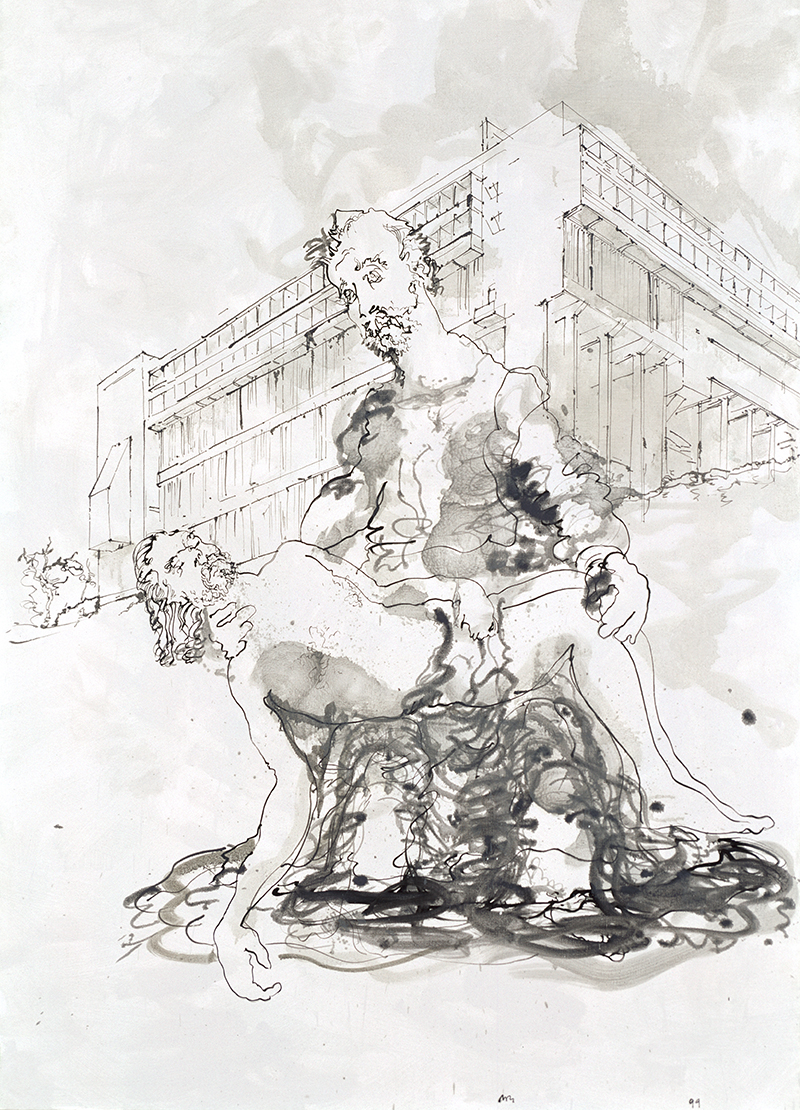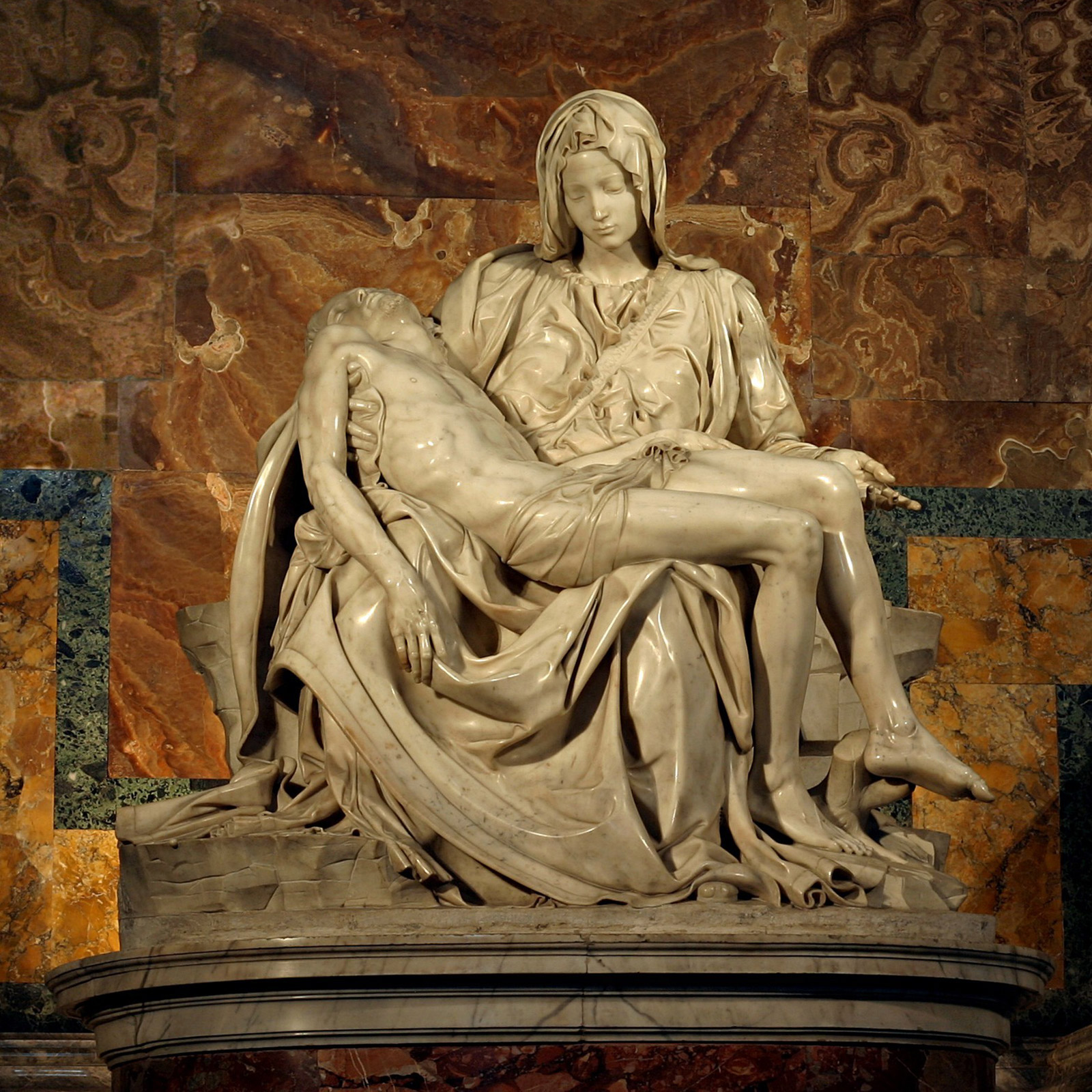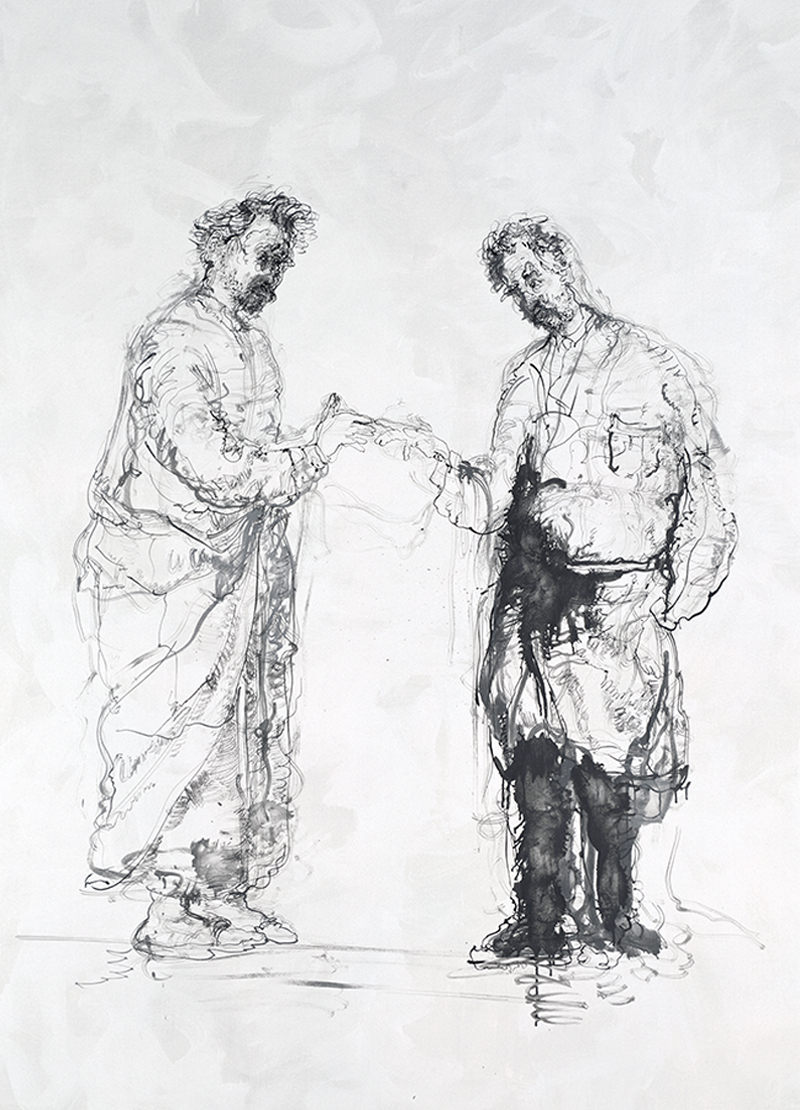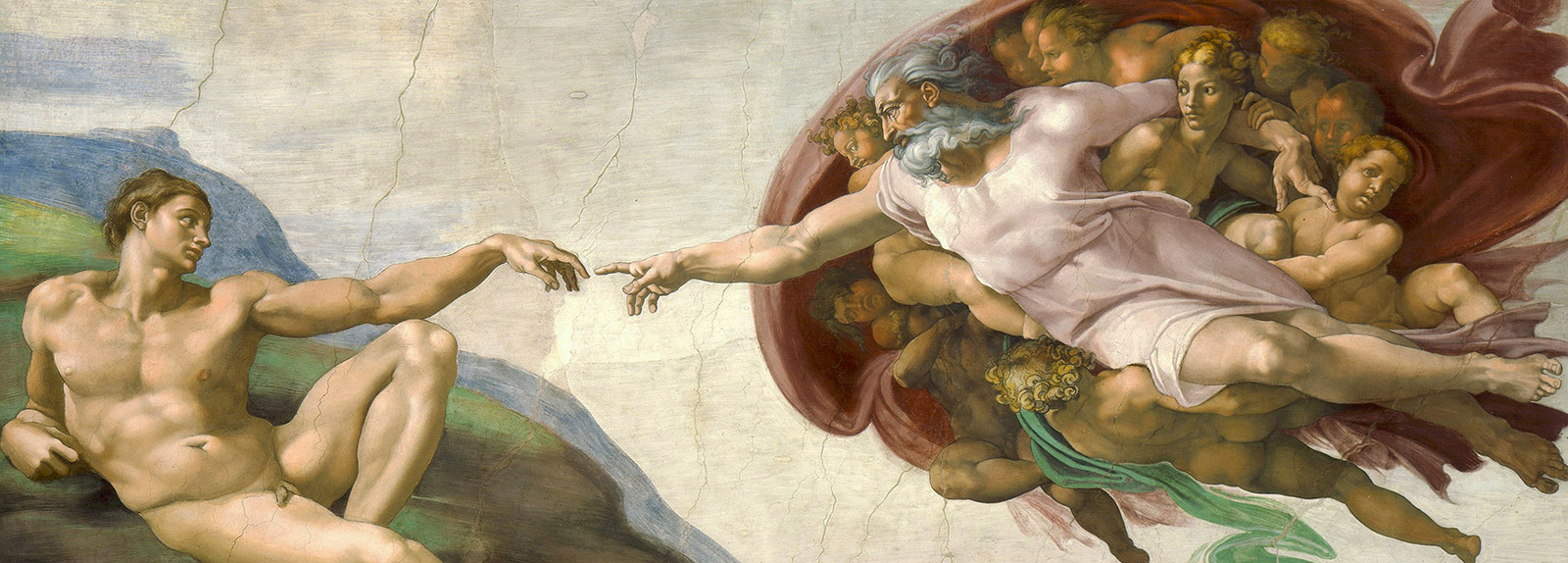Manuel Botelho (1950)

These two paintings joined the CAM Collection in 2001, shortly after being exhibited at the Museu Nacional de Arte Antiga. They belong to a larger set of paintings and drawings produced between 1997 and 2000, in which Manuel Botelho depicts himself in images echoing religious themes – the Passion of Christ and Marian iconography, i.e. imagery portraying the Virgin Mary – combined with contemporary elements.
All of the figures in these paintings are self-portraits of the painter. Without a doubt, the strangest figure appears in Pietà, in which the Virgin is shown as a man who is identical in appearance to another man lying across his knees.

The canonical representation of Pietà is based on pity or compassion, depicting the Virgin mourning or lamenting her dead son, but this painting departs from traditional portrayals.
The most famous Pietà is a sculpture by Michelangelo, produced in 1498/9, in which Jesus lies in his mother’s lap in an identical position to the one shown in this painting after being taken down from the cross. In the sculpture, mother and son are both young, both betrayed in their youth by the pain that afflicts them and unites them in an eternal embrace.

In Manuel Botelho’s painting, the two desolate figures, their age unclear, are portrayed against the backdrop of a modernist building by Le Corbusier: the Dominican convent of La Tourette (near Lyon, built between 1953 and 1961). According to the painter, who trained and practised as a professional architect, ‘When I produced these paintings and turned my attention to the world of religion in a different way, focusing on the more positive aspects of our cultural roots (in the 1980s, religion was largely used in art to echo oppression and the totalitarian state), I thought that Le Corbusier’s buildings would help me.
Unlike the fractured, oppressive architectures evoked in the past […], these luminous buildings exuded health and optimism. They immediately brought the paintings into the present day… and/or into the mythical era of the utopias of modernist architecture… creating unexpected visual associations for the narrative.’

Linked perhaps to the touch of optimism incorporated into the tragic representation par excellence of a self-Pietà, what appeals to me most in these two paintings is the relationship between an almost caricature-like irony and the ahistorical setting they depict. This is present in Pietà but is most apparent in Visitation, where the two figures greet one another. According to Manuel Botelho, this is not ‘a formal greeting, but an affectionate rapprochement (the touching hands subtly evoke the Creation scene on the ceiling of the Sistine Chapel)’.

Coming from or belonging to different eras, as indicated by their clothing, the two figures appear to be focused on their attempt to meet (again). Their gestures and the position of their bodies is suggestive of a non-aggression pact and a commitment to coexistence, which are immediately conveyed to the viewer.
I recommend consulting the catalogue Manuel Botelho. Pintura e Desenho 1997/2000 (Lisbon: Museu Nacional de Arte Antiga, 2000).
Ana Vasconcelos
Curator of the CAM
Curators’ Choices
The curators of the CAM reflect on a selection of works, which include creations by national and international artists.
More choices